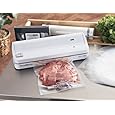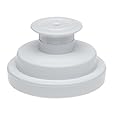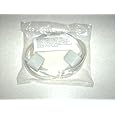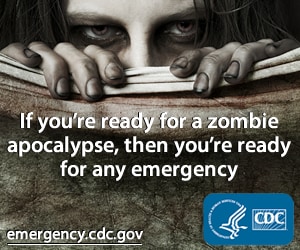Preppers use terms you may not be familiar with.
Shelter in Place ~ this means in an emergency you are staying put most folks consider this staying HOME
But, what if you aren't home and you need to get home to your family? Well in that case you would need a "BOB", or "GOOD" bag/kit
BOB ~ Bug Out Bag
GOOD ~ Get Out Of Dodge
GHB ~ Get Home Bag
Car Kit ~ Kit that lives in the car (I guess that one is obvious huh?)
You need a plan. If everyone's home and something happens great ~ the family is all together. What if Dad (or Mom) is at work and has to get home? DoO you have comfortable shoes to walk across town? Do you have what you need at work or in the car to get you home to your family? You need a plan and your family needs to know what your plans are. Each family member needs to know what to do "just in case:. Youur
Shelter in Place Kit will be different than your
Get Home Bag, because your ultimate goals are different.
Being Prepared 72-96 Hours is Step 1
In emergency preparedness, a 72 hour kit is widely considered the first step in becoming prepared. Sitting in a closet or some other area close to the front door, it can be grabbed in a moment’s notice, should you have to depart your home with little or no warning. Every family needs one for the unexpected. There’s a reason behind the length of time the kit’s contents should last. It generally takes the disaster relief agencies at least 3-4 days to move in and set up before offering assistance. Generally speaking, you’re on your own during this time. Depending on how bad the situation is, it could even be longer.
Whether you buy a kit or put one together yourself from scratch, it’s important for your family’s welfare to have one. In any type of disaster things will be bad. Not having the necessities to sustain your life and the lives of your family members could turn an otherwise manageable problem into a real disaster you could never recover from. Prepare now for life’s small and large surprises.
You may need to survive on your own after an emergency. This means having your own food, water, and other supplies to last for at least three days. You can not count on relief workers will be on the scene after a disaster, they cannot reach everyone immediately. You could get help in hours, more likely days some cases ~ weeks. In addition, basic services such as electricity, gas, water, sewage treatment, and telephones may be cut off for days, or even a week or longer.
Recommended Items to Include in a Basic Emergency Supply Kit:
• Water—one gallon (to two) per person, per day
3¬day supply for evacuation,
2¬week supply for home
• Food—non¬perishable, easy¬ to ¬prepare/no prep needed items
3¬day supply for evacuation,
2 ¬week supply for home
• Battery-powered or hand crank radio and a NOAA Weather Radio with tone alert and extra batteries for both
• Flashlight and extra batteries
• First aid kit
• Whistle to signal for help
• Dust mask, to help filter contaminated air and plastic sheeting and duct tape to shelter-in-place
• Moist towelettes, garbage bags and plastic ties for personal sanitation
• Wrench or pliers to turn off utilities
• Can opener for food (if kit contains canned food)
• Local maps
• Cell phone with chargers, inverter or solar charger
Additional Items to Consider Adding to an Emergency Supply Kit:
• Prescription medications and glasses
• Infant formula and diapers
• Pet food and extra water for your pet
• Cash or traveler's checks and change
• Important family documents such as copies of insurance policies, identification and bank account records in a waterproof, portable container.
• Emergency reference material such as a first aid book or information from www.ready.gov.
• Sleeping bag or warm blanket for each person. Consider additional bedding if you live in a cold-weather climate.
• Complete change of clothing including a long sleeved shirt, long pants and sturdy shoes. Consider additional clothing if you live in a cold-weather climate.
• Household chlorine bleach and medicine dropper – When diluted nine parts water to one part bleach, bleach can be used as a disinfectant. Or in an emergency, you can use it to treat water by using 16 drops of regular household liquid bleach per gallon of water. Do not use scented, color safe or bleaches with added cleaners.
• Fire Extinguisher
• Matches in a waterproof container
• Feminine supplies and personal hygiene items
• Mess kits, paper cups, plates and plastic utensils, paper towels
• Paper and pencil
• Books, games, puzzles or other activities for children
Get a kit/Assemble your own Kit
• Keep supplies in an easy¬to¬carry emergency preparedness kit that you can use at home or take with you in case you must evacuate.
Benefits of Involving Children
• Involving children is the first step in helping them know what to do in an emergency.
• Children can help. Ask them to think of items that they would like to include in a disaster supplies kit, such as books or games or nonperishable food items, and to help the household remember to keep the kits updated. Children could make calendars and mark the dates for checking emergency supplies, rotating the emergency food and water or replacing it every six months and replacing batteries as necessary. Children can enjoy preparing plans and disaster kits for pets and other animals.
Disaster Supplies Kit Checklist for Pets
• Food and water for at least three days for each pet, food and water bowls and a manual can opener
• Depending on the pet, litter and litter box or newspapers, paper towels, plastic trash bags, grooming items, and household bleach
• Medications and medical records stored in a waterproof container, a first aid kit and a pet first aid book
• Sturdy leashes, harnesses and carriers to transport pets safely Your pet may have to stay in the carrier for hours. Be sure to have a secure cage with no loose objects inside it to accommodate smaller pets. These may require blankets or towels for bedding and warmth and other special items
• Pet toys and the pet's bed, if you can easily take it, to reduce stress
• Current photos and descriptions of your pets to help others identify them in case you and your pets become separated, and to prove that they are yours
• Information on feeding schedules, medical conditions, behavior problems and the name and telephone number of your veterinarian in case you have to board your pets or place them in foster care.
Additional Supplies for Sheltering-in-Place
In the unlikely event that chemical or radiological hazards cause officials to advise people in a specific area to "shelter-in-place" in a sealed room, households should have in the room they have selected for this purpose:
• A roll of duct tape and scissors
• Plastic sheeting pre-cut to fit shelter-in-place room openings
Ten square feet of floor space per person will provide sufficient air to prevent carbon dioxide buildup for up to five hours. Local officials are unlikely to recommend the public shelter in a sealed room for more than two-three hours because the effectiveness of such sheltering diminishes with time as the contaminated outside air gradually seeps into the shelter.
NOTE: Always keep a shut-off valve wrench near the gas and water shut-off valves in your home.
~ You are not alone in your journey ~












